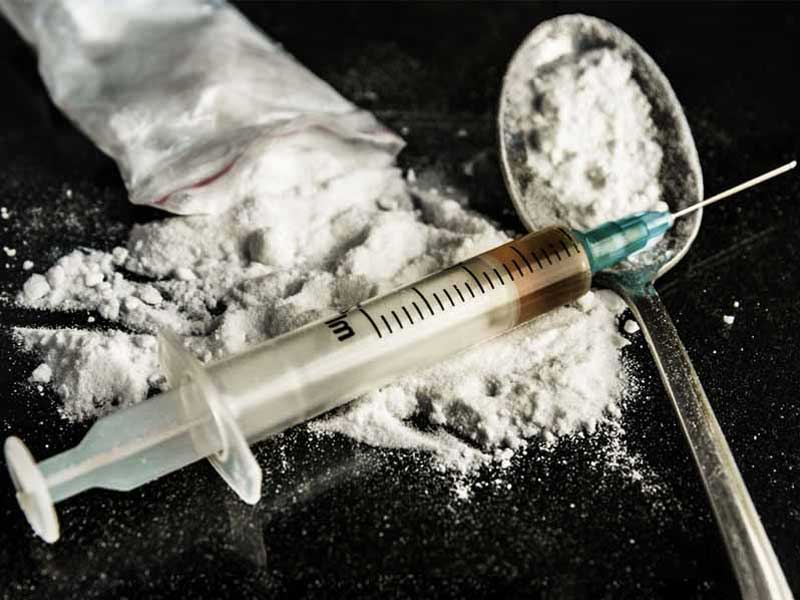USPSTF Final Recommendation
Task Force: Research Needed in Counseling Youth on Illicit Drugs
June 04, 2020, 01:50 pm News Staff – According to the 2018 National Survey on Drug Use and Health, about one in six adolescents and about 39% of young adults in the United States used illicit drugs in the past year. While these percentages are roughly the same as in previous years, it still means that overall, more than 17 million people between the ages of 12 and 25 have used illicit drugs in the past year.

On May 26, the U.S. Preventive Services Task Force posted a final recommendation statement and final evidence summary on primary care-based interventions to prevent illicit and nonmedical drug use in children, adolescents and young adults, including pregnant patients.
Based on the evidence review, the task force concluded that the evidence is insufficient to assess the balance of benefits and harms of primary care-based behavioral counseling interventions to prevent illicit drug use in these populations and recommended that more research be conducted. This is an "I" recommendation.
"Finding effective ways for clinicians to help keep youth from starting to use drugs is critical to the health and well-being of our communities," said task force member Michael Silverstein, M.D., M.P.H., in a news release. "Unfortunately, the Task Force still cannot make a recommendation due to gaps in evidence, so we are renewing our call for more research."
It should be noted that the recommendation does not apply to children, adolescents and young adults who are regular users of illicit drugs (defined as drug use at least one time per week) or who have been diagnosed with a substance use disorder. In addition, the recommendation does not cover screening for illicit drug use. Screening is addressed in a separate recommendation statement that is currently being updated.
Comparison With Other Recommendations
The final recommendation statement expands on and is generally consistent with the task force's 2014 recommendation on the topic. Whereas the 2014 recommendation statement focused on illicit drug use in children and adolescents, the population considered in the new recommendation statement's evidence review has been expanded to include young adults ages 18 to 25.
STORY HIGHLIGHTS
The task force also issued an "I" recommendation in its 2014 recommendation statement and concluded at the time that there was insufficient evidence to assess the balance of benefits and harms of primary care-based behavioral interventions to prevent or reduce illicit drug or nonmedical pharmaceutical use in children and adolescents. While the AAFP has not issued a clinical preventive services recommendation on primary care-based interventions to prevent illicit drug use, it continues to support the USPSTF recommendation on screening for illicit drug use.
Update of Previous Recommendation
To update the previous recommendation, the USPSTF commissioned a systematic evidence review that included 29 studies of interventions to prevent illicit drug use. All studies included in the previous review were evaluated for inclusion in the current review.
Findings were inconsistent for the primary outcome of illicit and nonmedical drug use. Some trials showed clear benefits from behavioral counseling interventions, but most showed no clear benefit or harm, and two showed increased use of drugs in the intervention groups. While some interventions were associated with reduced illicit and nonmedical drug use, they tended to either target a relatively narrow group of patients with unknown or likely limited generalizability to other populations, or to have not had their results replicated.
The task force stated that more studies are needed that replicate, further refine and broadly implement the interventions in the review that were found to reduce illicit and nonmedical drug use. These include Familias Unidas, a family-based intervention program focusing on Hispanic youth, as well as interventions that include clinician training, education, personal coaching and continuous quality improvement components.
The task force also called for more research to determine the effectiveness of technology-based interventions such as text-based messaging, smartphone apps, games, Web-based interventions and social media.
Response to Public Comment
The USPSTF posted a draft recommendation statement for public comment Oct. 1-28, 2019.
In response to comments from several individuals who noted that the term "prevent or reduce" could be interpreted to apply only to persons who have never used illicit drugs or only to those currently using drugs, the task force reiterated that the primary focus of the recommendation is the prevention of illicit drug use in children, adolescents and young adults who are not regular drug users, which includes those who have never used drugs as well as those with early or experimental illicit drug use. The task force also revised language in the recommendation statement to clarify this point.
Several commenters also suggested that research on interventions that can be conducted in schools should be included. These comments also noted confusion over the term "primary-care based," as many of the interventions reviewed were not carried out in a clinical setting. In response, the USPSTF added language clarifying that the task force makes recommendations on interventions that can be conducted in or referred from a clinical setting; as such, only studies that were conducted in or judged to be generalizable to a primary care setting were included in the evidence review.
In addition, the task force updated the recommendation to include data from a 2019 trial that evaluated the effect of a computer-based intervention to prevent substance use and associated risky behaviors in youth.
Up Next
The AAFP's Commission on Health of the Public and Science plans to review the USPSTF's final recommendation statement and evidence summary and will then determine the Academy's stance on the recommendation.